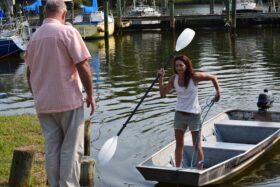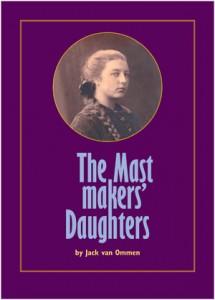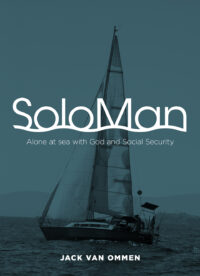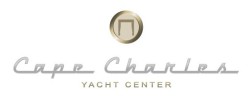It took me three hours to untangle the boat from the mooring ball in Annapolis, on Thursday. The harbormaster recommended to add extra lines to the one I usually use to a mooring, when I was preparing to leave on the 1st of September, the day that the “Ida” leftover storm was to hit Annapolis. The lines got wound around and stuck in he ball’s chain. It was a great afternoon sail. I anchored for the night on the south shore of Coaches Island on the Maryland Eastern Shore. That night the wind came in strong from the North West 20-25 knots, howling through the rigging but I was reasonably protected on the lee side from the waves. But once back on the Chesapeake Bay, on Friday, it became a wild ride, doing 5 to 6 knots on just the tiny storm jib. I pulled into the SoloMons again, where I stopped north bound, mid afternoon, because there is no place to anchor from there onward to my destination up the Potomac. I left Annapolis with a bare pantry, the stores are far from the moorage. Now I had time to row the folding bike to shore and re-provision. Saturday the wind had turned from North to South-West, I mostly motor sailed but once on the Potomac I was able to ease the sheets.
The sail into the winding Yeocomico River looked challenging, but there was Chris Johnson on his “The Twin Brothers” sailing next to me and leading the way to his dock on Long Cove. We met in Cape Charles in the Spring. He and his wife Therese, live in this beautiful cove, where he docks his two boats, “The Twin Brothers”, which he converted to electric power, and a Catalina 30 without a working engine that he and his nephew Matt sailed from Hampton, into the winding river to his dock.
Both he and his wife and nephew, I sense, are permanent friendships. We went to mass together on Sunday, in the afternoon, I brought the boat to “The Slips” a small private marina, owned and run by Annie the, at least 6th Arnest generation.
“The Slips” “Fleetwood” left background
Kinsale is a small town where the time seems to have taken a long break. Nestled on the banks of the Yeocomico River surrounded by large fields of corn, soybeans and wheat. Right next to the marina are the silos of the granery being filled right now with the corn crop and loaded into large barges destined as feed for the poultry and cattle farms. It once was a thriving maritime-agricultural center, with a vegetable cannery, and watermen fleet.
A quote from the Kinsale historical foundation (www.KinsaleFoundation.org) “Kinsale is the oldest customs port on the south side of the Potomac. Taxes were collected here in colonial times and from the 1850’s to 1933 steamboats visited every day to ferry freight and passengers from this deepwater port that served a 125-sq. mile area. Farming, forestry and fishing all sent away their harvest chiefly by boat until the bridges were built in the 30’s and Perdue Granary still gathers the harvest of myriad area fields of beans and small grains to ship away by barge. War also came by water. The town was attacked from the river both during the War of 1812 and the Civil War.”
Annie shared with me this picture of her great grandfather and grandfather at the marina store in 1970 and her grandmother who is still living nearby in her late nineties.
Matt, Chris’ nephew, is a delivery skipper and is my next-door neighbor in the marina; he helped me to the top of the mast to re-install the tri-color light.
Chris drove me to Fredericksburg this morning to catch the Amtrak to the Baltimore Airport. I am writing this from the Alaska flight to Seattle. I will spend the rest of the interrupted September visit to the North-West with Lisa and then on to Las Vegas for my son John’s 50th birthday on the 30th. I should be back on the boat by the 6th of October. And the plan is to sail south with a stop on Tangier Island and on to Onancock where Susan Kovacs, one of my Cape Charles friends will come to take me to spend a few days with our CC friends. Then to Matthews YC for the October 20 Ocean Cruising Club meeting.











